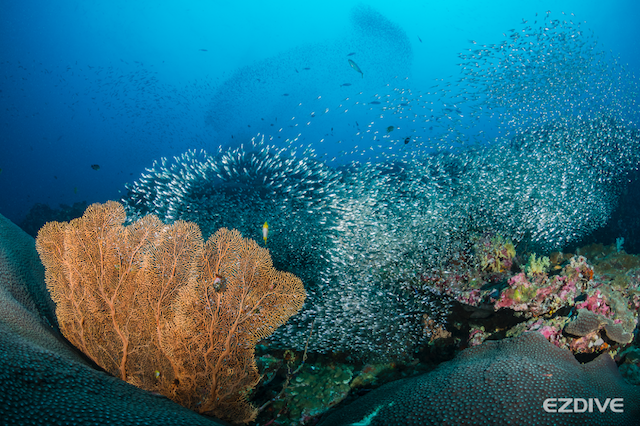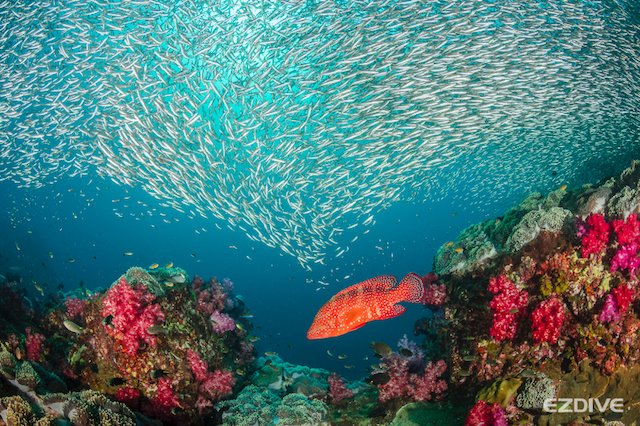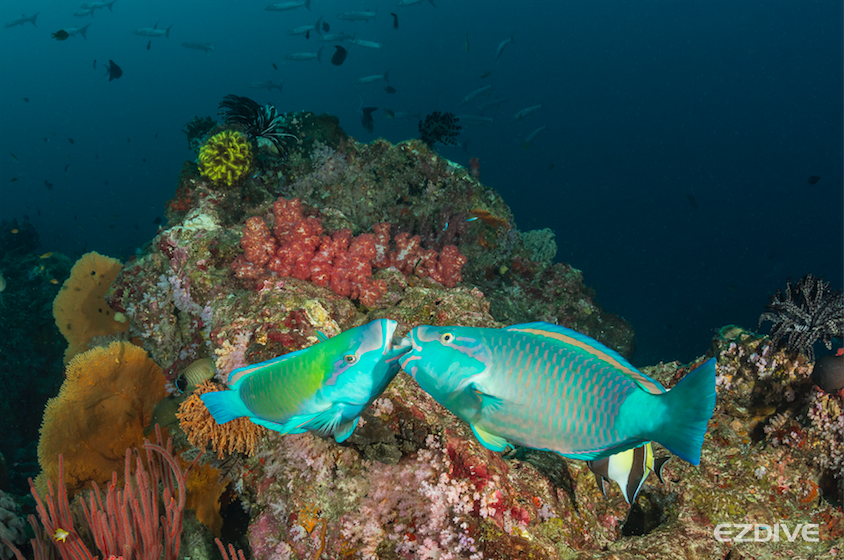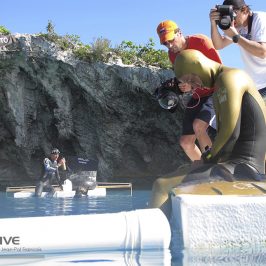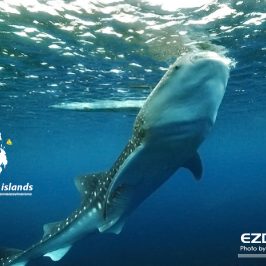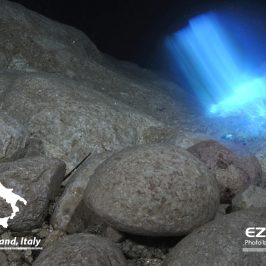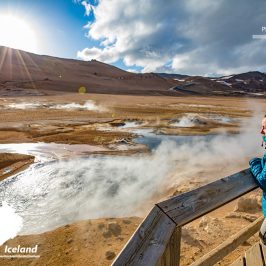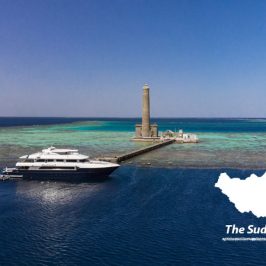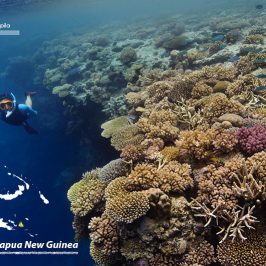The west coast of Thailand has been a popular dive destination for years, with 740km of coastline and numerous islands bathed in the tropical waters of the Andaman Sea.
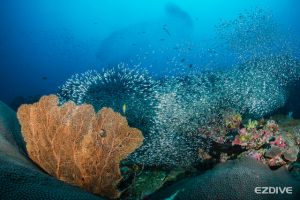
Text and Photo by Alex Tyrrell
Centrally located along the coast, Phuket serves as the departure point for live-aboard cruises heading to the south towards Koh Lanta and the twin-pinnacles of Hin Muang and Hin Deung to the north, in the direction of the Mu Koh Similan National Park.
MV Giamani’s six-day diving itinerary was perfect for two reasons: the 10-diver maximum capacity appealed to me as a photographer and the itinerary covered both the southern route, as well as north to the sites like Mu Ko Similan National Park, plus Thailand’s most iconic dive site – Richelieu Rock, discovered by diving pioneer, Jacques-Yves Cousteau, located 18km southeast of Koh Surin,
On the itinerary were three dives at Hin Muang and Hin Deung, these two pinnacles are located southwest of Koh Lanta and got their names from the colors of the carpet of soft corals that adorn the pinnacles, with different hues being dominant at each site. Hin Muang means purple rock while Hin Deung means red rock. Both sites can be prone to strong currents; so an advanced diving certification is recommended. The currents bring nutrients to the vibrantly colored corals, as well as attracting pelagic visitors, with manta rays being a regular encounter for divers.
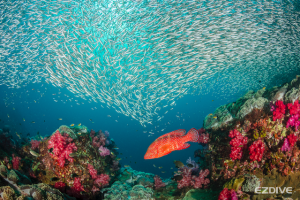
The wreck of the HTMS Kledkaeo was a Norwegian navy ship sold to the Thai navy in 1956. It was decommissioned and scuttled to form an artificial reef near Koh Phi Phi Leh on March 2014. The wreck is 47m, but visibility was poor that day I stayed shallow near the bridge where there was a large school of snappers circling the funnel. We headed in the direction of Phuket for our next dive at Anemone Reef, duly named for the magnificent sea anemones that carpet the dive site. The final dive of the day was at Koh Racha Noi, a site that had some great macro critters, like colorful nudibranchs and mantis shrimp. We then set off to Chalong Pier for a change of guests and fresh supplies, before heading off again in the direction of the Similan Islands.
Due to equalizing problems, I missed all the dives at the Similan Islands. Unfortunately I did not get to dive Elephant Head Rock I recall being one of my favorite dives on previous trips. Day Four started off at Koh Bon, located 20km north of the Similan Island No.9. The first dive was on Koh Bon Pinnacle, where the soft coral and glassfish theme continues, but with a change of color from the southern sites, this time with yellow being the dominant hue. This is a deep site, dropping off to 40m+ around the edges of the pinnacle, which rises up to 18m, and is prone to strong currents that keeps the marine life varied and vibrant. Dive two was at the West Ridge, which has spectacular underwater topography, with the ridge itself extending out away from the island reaching depths of 45m. This site has the highest concentration of oceanic manta rays encounters in Thailand, but again, luck was not on our side and none appeared during the dive.
Koh Tachai was the destination for our afternoon dives, starting with Koh Tachai Pinnacle, made up of a series of large graniteboulders. Here we encountered a school of pickhandle barracuda hanging in the current, a nice variety of reef fish species, some huge sea fans and the ever-present glassfish were once again in force. The final dive of the day was at Koh Tachai Reef, that is a gently sloping fringing reef, consisting mainly of hard corals and the usual suspects of reef fishes that inhabit them. We overnighted at Koh Tachai and then made a second dive on the pinnacle the following morning, when the current was running harder, bringing the barracuda in from the blue and swirling above our heads.
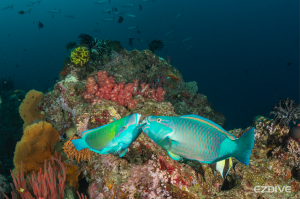
It was then time for the crossing to the jewel of the Andaman crown – Richelieu Rock. The site is a horseshoe-shaped pinnacle that rises up from the seafloor 50m below, breaking the surface at low tide. It is home to macro life of ornate ghost pipefish and tigertail seahorses, larger creatures like Napoleon wrasse and pharaoh cuttlefish. This site is also is regularly visited by whalesharks, giant and bluefin trevally making the most of its abundant food source.
After exploring the site on the first dive, I spent the entire second dive at the southeastern corner where hunting action was at its peak. It was non-stop action, with rainbow runners joining the trevally in the silvery feast. The final dive was in the late afternoon and, as I descended, a dense school of glassfish enveloped the top of the pinnacle, providing that perfect photo opportunity to highlight the beauty of Richelieu Rock in the evening light. For me this was the highlight of the trip. The final day saw us heading back towards Phuket, diving two wrecks near Khao Lak; the MV Sea Chart and the Thai Muang, but these were no match compared to the beauty of Richelieu Rock.
Numerous liveaboard boats service the Similan Islands and surrounding area, offering cruises of different durations, for varying budgets. This does however mean that popular dive sites can get a bit crowded at times, especially in peak season. I’m sure I’ll be back as it only takes me a half a day to travel across Thailand from my home in Koh Tao.
TRAVEL INFORMATION
Getting there:
Phuket has an International Airport serviced by nearly 50 airlines, including Silk Air, Thai Airways, Bangkok Airways, Air Asia, Air China, China Southern, Hong Kong Express and Korean Air. Domestic flights from Bangkok take 1hr 20mins if transiting through the capital.
Visa:
Visa exemption is granted to nationals of 55 countries (including Hong Kong, Indonesia, Japan and Philippines). Visa on Arrival is available to nationals of 19 different countries (including China and Taiwan) at a cost of 2,000THB. More information can be found at www.thaiembassy.com
Your passport should be valid for at least 30 days and you may need to show proof that you a confirmed airline ticket showing onward travel.
Language:
The official language is Thai, but English is readily understood, especially on the dive boats.
Currency:
The currency is Thai Baht (THB) with the exchange rate of 34THB to 1USD at the time of writing.
Electricity:
Thailand uses 220volts AC 50Hz electricity. Plugs can be either two-prong or three-prong, with round or flat pins. Three-prong sockets can accept two-prong plugs and commonly the socket will accept both round and flat pins.
Dive Season:
The northeast monsoon brings the best weather, so the high season is from November to April. Diving the local sites is possible year round, but the southwest-monsoon brings with it rougher seas.
Dive Operators:
MV Giamani – www.diving-thailand-phuket.com
The Junk – http://thejunk.com
Deep Andaman Queen – www.deepandamanqueen.com
MV Hallelujah – www.bigbluedivingkhaolak.com/similan-liveaboard/
SY Diva – www.divamarine.com

